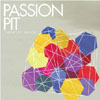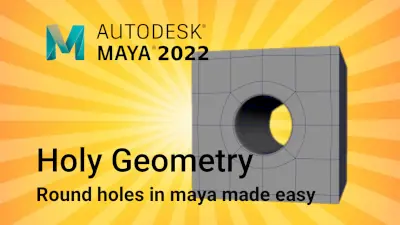Introduction to Maya - Modeling Fundamentals Vol 2
This course will look in the fundamentals of modeling in Maya with an emphasis on creating good topology. It's aimed at people that have some modeling experience in Maya but are having trouble with
complex objects.
#
1
02-12-2005
, 10:43 AM
Creating HDRI Images
If I had a series of images in the correct format for HDRI's (24 bit Tif's I think would do??) could I use the Spherise tool in photoshop to create a basic light probe image, and then use the HDR shop software to compose the differently exposed images in to one hdr image??
I might be barking up the wrong tree but I just had a bit of a think about trying to create HDRI's in the most simple way so any comments would be great.
Cheers
#
2
02-12-2005
, 09:08 PM
Live the life you love, love the life you live
#
3
03-12-2005
, 06:09 PM
Thought that this way you wouldn't have to play about with a chrome ball etc.
Anyone else got any ideas on this?
#
4
04-12-2005
, 08:53 PM
Live the life you love, love the life you live
#
5
06-12-2005
, 09:49 AM
https://www.gregdowning.com/HDRI/stitched/
shows how the images are composed to form a full range image
Posting Rules Forum Rules
Similar Threads
White background Render problem. Mental Ray Final Gather & HDRI light studio 2.0
by goggles in forum Lighting & Rendering replies 3 on 03-11-2011
Best place to get HDRI HDR images
by Soulrider911 in forum Maya Basics & Newbie Lounge replies 2 on 27-09-2007
using still images in maya
by poodlepie in forum Maya Basics & Newbie Lounge replies 7 on 23-02-2007
how can I stitch rendered images together? (500 images)
by 3danimationmaya in forum Maya Basics & Newbie Lounge replies 8 on 14-08-2006
fur rendering failed?????
by olivermagno in forum Maya Materials & Textures replies 2 on 21-05-2003
Topics
Free Courses
Full Courses
VFX News
How computer animation was used 30 years ago to make a Roger Rabbit short
On 2022-07-18 14:30:13
Sneak peek at Houdini 19.5
On 2022-07-18 14:17:59
VFX Breakdown The Man Who Fell To Earth
On 2022-07-15 13:14:36
Resident Evil - Teaser Trailer
On 2022-05-13 13:52:25
New cloud modeling nodes for Bifrost
On 2022-05-02 20:24:13
MPC Showreel 2022
On 2022-04-13 16:02:13









